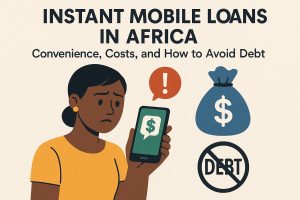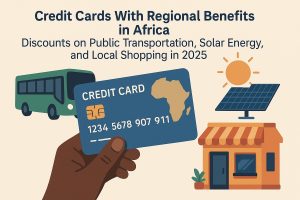For decades, access to formal financial systems in many parts of Africa has been a challenge, especially for entrepreneurs in underserved communities. Among these tools, credit cards and microcredit stand out as powerful catalysts for economic change across the continent.
While microcredit has long been promoted as a way to uplift low-income entrepreneurs, the integration of credit cards into African markets introduces a new level of financial flexibility. Combined, these financial products are helping to redefine how entrepreneurs manage cash flow, make investments, and scale their businesses.
The Evolving Role of Credit Cards in African Economies

Fintech innovations, mobile banking, and more inclusive banking policies have extended their reach into previously untapped segments. For African entrepreneurs, this means access to revolving credit, purchase tracking, and financial credibility that was once out of reach.
Whether for purchasing inventory or covering unexpected costs, the ability to defer payments can be a game-changer for small businesses. Unlike informal borrowing, this type of credit often comes with clearer terms, structured repayments, and the added benefit of building a formal credit history.
How Microcredit Complements Credit Cards Access
Microcredit still plays a foundational role, particularly for entrepreneurs who are not yet ready for larger lines of credit. These small, often peer-group-based loans provide immediate capital for launching or sustaining micro-enterprises. But as businesses grow, their financial needs become more complex.
While microcredit offers a start, credit cards introduce continuity. Entrepreneurs no longer need to wait for the next group cycle to access funds—they can manage expenses dynamically, gaining real-time access to capital and improving operational efficiency.
Building Trust and Creditworthiness in a Digital Age
Accessing credit cards in Africa still depends heavily on trust and verification. Fortunately, technology is helping bridge this gap. Digital credit scoring models based on mobile money transactions, bill payments, and e-commerce behavior are enabling more inclusive risk assessments. This shift benefits informal traders, artisans, and small-scale producers who have historically been excluded from traditional banking.
Real-World Impacts: Stories from the Ground
Across the continent, the benefits of combining credit cards and microcredit are becoming increasingly evident. These changes are driven by greater access to credit, enhanced digital tools, and evolving support networks. Consider the following examples:
- A seamstress in Nairobi used a microloan to buy her first sewing machine. Six months later, she qualified for a credit card linked to her mobile wallet, enabling her to purchase materials in bulk and meet growing demand.
- In Ghana, a street food vendor who accepted mobile payments was granted a digital credit card with a modest limit. With it, he expanded his stall and doubled his daily earnings in under a year.
- A small shop owner in Kigali leveraged both microcredit and credit card services to create a hybrid retail model, stocking both local and imported goods and accepting card payments.
These stories are not isolated; they reflect a broader movement toward financially empowered entrepreneurship across the continent, driven by accessible, adaptable financial tools that are reshaping how small businesses operate, grow, and sustain themselves in diverse economic environments.
Challenges Still to Overcome
Despite these gains, barriers remain. Limited financial literacy, high interest rates, and inconsistent regulations across regions can hinder adoption. Additionally, not all entrepreneurs are comfortable using credit cards, fearing debt or misunderstanding their terms. To ensure long-term success, financial education must accompany financial access.
Conclusion: Empowering the Next Generation of African Entrepreneurs
Credit cards and microcredit are no longer separate solutions—they are complementary tools forming a new ecosystem of financial empowerment in Africa. When used together, they offer entrepreneurs flexibility, resilience, and growth opportunities once thought unattainable.
As digital infrastructure continues to expand and financial institutions invest in inclusion, more African entrepreneurs will harness the full potential of these instruments. With the right support, this new frontier promises not just economic growth, but widespread prosperity built from the grassroots up.




